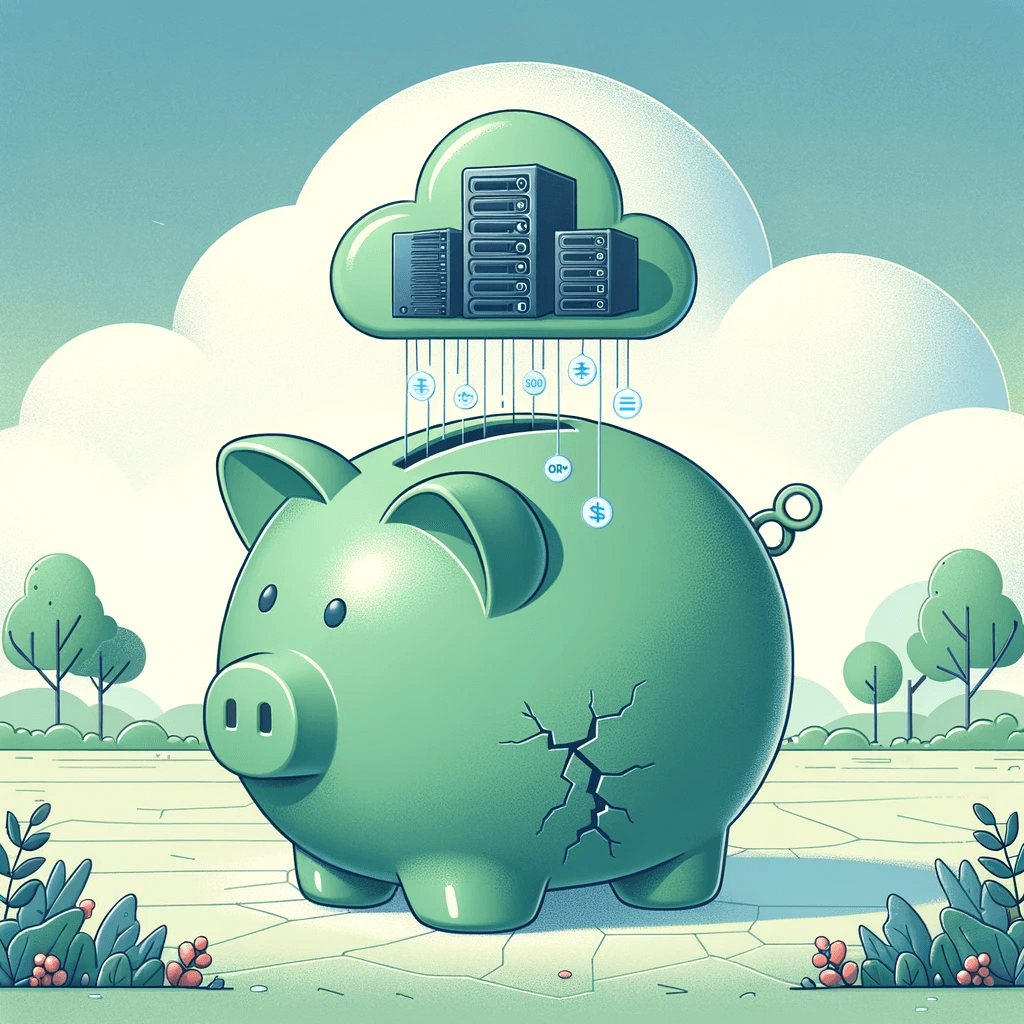Jumping into serverless? It’s appealing, especially for startups. Imagine no servers to fuss over and a payment model where you only pay for what you actually use. Sounds ideal, right? But here’s the kicker: the free tier reels you in, making it all seem so economical. Yet, when your usage climbs and the freebies run out, the first real bill can hit you hard. And by the time you realize, you’re too invested — making it challenging to switch. That’s why it’s crucial to dive into the cost details upfront, ensuring you’re well-prepared for the journey ahead.
In this guide, we’ll unpack serverless pricing, helping you navigate its intricacies and make informed decisions for your venture. This is the first article in a short series that explores the obvious and hidden cost and the dangers of the free tier.
The Big Picture: Main Cost Drivers
- Compute Time and Memory Allocation: The heart of serverless costs. You’re billed for the time your functions are running and the resources they consume. These costs scale with the memory and duration of your function’s execution.
- Request Counts: Each function invocation, regardless of its duration, incurs a charge. A function called frequently will cost more than one that’s seldom used.
- Free Tiers: A double-edged sword. While they provide a certain amount of free requests and compute time, exceeding these can result in charges. It’s crucial to monitor your usage against the free tier limits.
| Provider | Price per GB-second (USD) | Price per Request (USD) | Free Tier |
|---|---|---|---|
| AWS Lambda | $0.00001667 | $0.20 per 1M requests | 1M requests and 400,000 GB-seconds |
| Google Cloud Functions | $0.0000025 – $0.0000035 | $0.40 per 1M requests | 2M requests and 400,000 GHz-seconds |
| Azure Functions | $0.00001600 | $0.20 per 1M requests | 1M requests and 400,000 GB-seconds |
CloudHopper’s Cost Calculator: To help you with that, we’ve created a little tool. By factoring in compute time, request count, and the free tier, our calculator offers a comprehensive estimate, giving you a clearer view of your potential serverless expenditure and it helps you compare the cost between different cloud providers. A tool like this is an essential first step to fathom the depth of costs associated.
The Under-the-Radar Influencers: Hidden Cost Factors
The cost estimation tools can give you a good initial idea of the cost for the computation, but there is so much more. First there are lot’s of obvious additional costs for API Gateways, storage, messaging and other additional services that cannot easily be captured by a cost estimation tool. But there’s also the not so obvious cost directly related to the computation and these may generate some unpleasant surprises. Here’s a list of some obvious and not so obvious cost factors:
- Data Transfer and Bandwidth: Ingress might be free, but egress, especially cross-region or to the internet, can make costs surge. For instance, if your function serves data-rich content, like videos or high-resolution images, the egress data charges might stack up. For a deeper view and an example check out this followup article: Hidden Costs in the Serverless Cloud (2): Data Transfer and Bandwidth
- Persistent Storage: Beyond the ephemeral storage provided by platforms like AWS Lambda, using persistent storage solutions or databases entails additional charges based on data volumes and operations.
- Provisioned Concurrency / Reserved Instances: Some platforms, like AWS Lambda, allow you to pay for provisioned concurrency to ensure that your function warms up instantly. This can add to costs but improves performance.
- API Gateways and Endpoints: Exposing your functions via APIs might be crucial for your application but isn’t without its costs. Pricing structures here typically revolve around data volumes or request counts.
- Extensions, Add-ons, and Third-party Services: Every additional tool, from logging to monitoring and third-party integrations, has a price. Costs here can be fixed, usage-based, or a blend of both.
- Logging and Monitoring: While essential for debugging and monitoring, logging isn’t free. Platforms like AWS CloudWatch can turn out to be notably expensive, especially with verbose or “chatty” lambda functions. A continuous stream of logs not only fills up your log storage quickly but also swells your bill. It’s imperative to optimize logging levels and frequencies. Also setting up metrics can quickly generate a surprising spike in costs.
- Regional Pricing Variations: Deploying functions in certain regions can cost differently. For instance, serverless functions in Asia might have a different pricing structure than those in North America or Europe.
- Deployment Costs: CI/CD processes, while streamlining deployment, aren’t cost-free. Cloud-based deployment tools or platforms, associated storage, and even the data transfer associated with deployments add to your costs.
- Development and Maintenance Cost: Now this one is slightly different from the others, but it may hit you hard. Choosing the wrong programming language, framework, tools or architecture will maybe hit you the hardest, even if some of the costs don’t show up directly on your cloud invoice.
In Conclusion
Serverless, while revolutionary, demands a nuanced understanding of its cost structure. Beyond the glaring costs lie a maze of hidden charges, waiting to trip the unsuspecting user. As you navigate this maze, tools like CloudHopper’s cost calculator can be your guiding light, helping you anticipate and plan for the costs involved. But it’s just one piece in the puzzle and it won’t give you the complete picture by far. Regularly reviewing and optimizing your serverless applications and architecture can ensure you harness the full power of serverless without breaking the bank.
